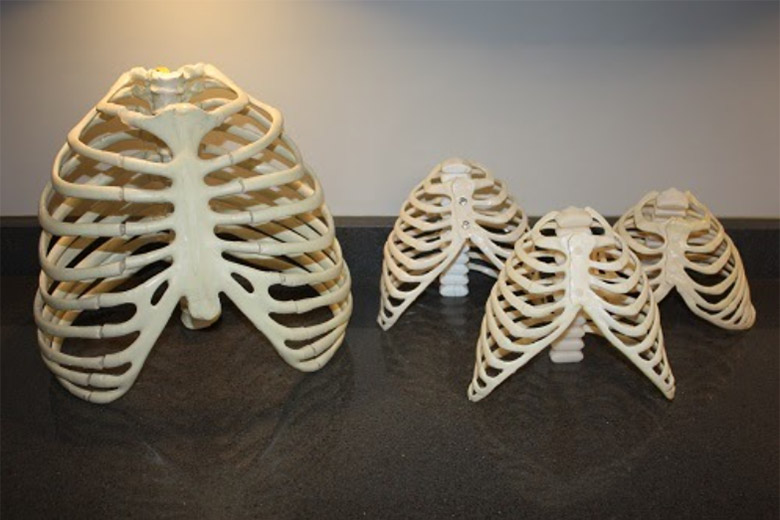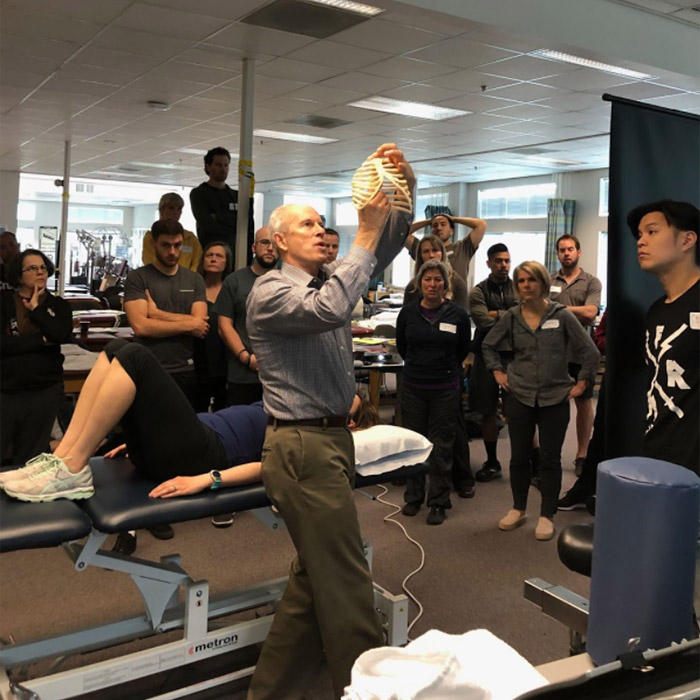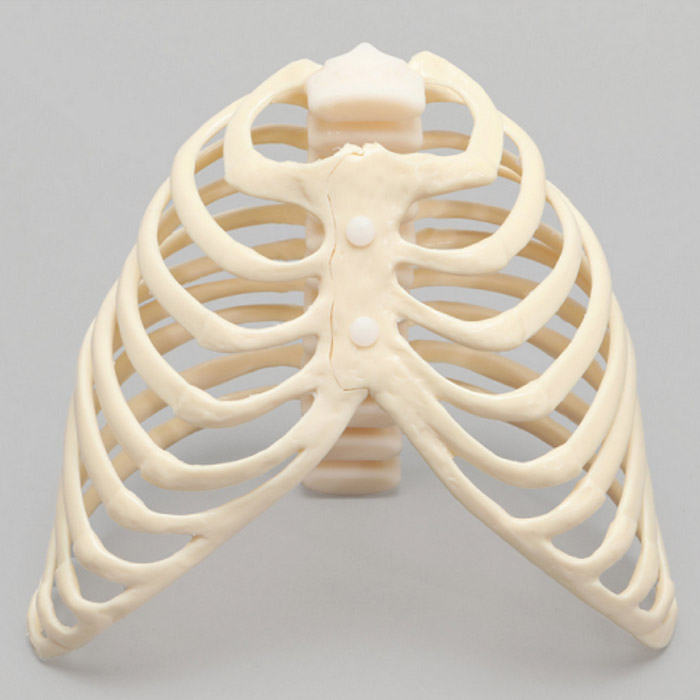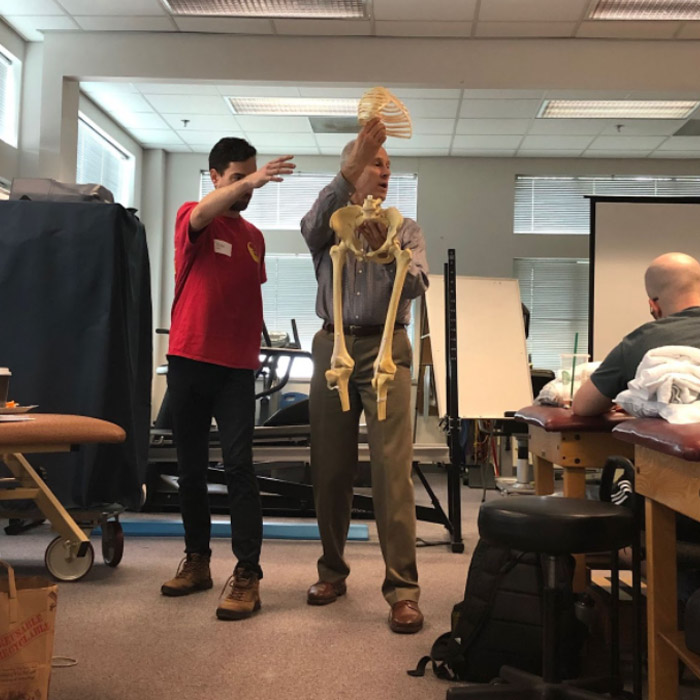Anatomy Models For Physical Therapy Training
The educators at the Postural Restoration Institute® have poured more than 20 years of instructional expertise into the development of a medical training model that’s now used by hundreds of clinicians around the globe.
In partnership with Sawbones, the Institute has been able to create a unique rib cage model that turns theoretical discussions into practical lessons, and hands-on training into transferable clinical skills. The results have helped thousands of Clinicians across a range of fields and provide proof that physical therapy training can be designed around best practices and expert knowledge rather than be limited by existing technology.
The Postural Restoration Institute® is creating the tools it needs to better inform the medical professionals of tomorrow, and all it needed was the right engineering partner.

Meaningful Relationships Through Clinical Integration
The Postural Restoration Institute® was founded in Lincoln, Nebraska, at the turn of the millennium with the goal of developing and teaching innovative treatments based on the influence of asymmetrical patterns of human positioning and behavior.
Although grounded in the field of physical therapy, the Institute’s educators have established interdisciplinary relationships with professionals from a variety of specialties including podiatry, optometry, dentistry, orofacial myology, speech pathology, chiropractic, athletic training, strength and conditioning, and other areas of health and wellness.
Throughout two decades of success, the Institute’s courses and programs have certified thousands of Postural Restoration Credentialed Providers and other professionals around the world. Their work has now grown well beyond the insights of their programs to include the creation of innovative physical therapy training methods that are now used around the world.
Every one of these segments has different levels of complexity, from common injuries physicians encounter often to more complicated issues that require highly specialized treatment. As a result, each has a focus of study instructors should target when looking at the overall structure.

Training Models that Create Better Professionals
The Institute’s evolution as a worldwide leader in interdisciplinary integration has gone hand-in-hand with the development of technological teaching resources. The Institute’s leaders have continually sought out educational models and materials that aid in the instruction and understanding of anatomical positioning and treatment methods. Physical therapy training models turn the conversation from written dialogue to real-life application, and these models and materials have evolved greatly over the decades.
At first, the Institute’s educators used off-the-shelf technologies produced by market leaders such as Sawbones. The relationship began with basic pelvis models used to demonstrate and visualize correct positioning. This core teaching resource progressed to a pelvis model with removable femurs, which allowed for a unique demonstration of the influences both the acetabulum and femur have on each other through the orientation and rotation across the femoroacetabular joint.
From this point on, both parties began to make better use of the other’s expertise to create new, unique models now in common use worldwide.
Needs Drive Invention
The creation of the SYMBA Ribcage Model was driven by educational frustrations with existing training products. The movable, pliable model commonly used in student and patient demonstrations today came into being because previous models didn’t possess the flexible, rotational, and controllable aspects needed to authentically recreate interventions and presentations.
Institute leaders worked with Sawbones designers for a year to continuously refine and reimagine the perfect model for demonstrating the thorax and associated ribcage mechanics until they arrived at the current design. This product has since gone into commercial production and has proved invaluable to professionals and educators alike.
As the SYMBA model was developed under the direction of the Institute’s instructors, it has practical features built-in to its design as well. It is made of robust, authentic materials and ships with a solid foam stand that extends its lifespan and makes sure it functions just as well on the hundredth demonstration as it did the first.
These practical considerations are what make custom physical therapy training models so effective.

Models That Serve Course Design
SYMBA is just one example of how a partnership between experienced educators and expert designers can lead to the creation of models that serve the goals of medical training courses.
Until their collaboration with Sawbones, Postural Restoration Institute® instructors had to make do with models that did not have the functional capacity to accurately recreate the three-dimensional positioning of the femur, pelvis, and thorax.
In partnership, however, the two have produced Tri-Planar Movement Demonstrators that allow instructors to faithfully demonstrate multiple planes of movement in the human body. These demonstrators provide students and patients at any level of understanding a better visualization of movement strategies, which often rely on the overuse of dominant muscle chains on one side of the body.
The creation of purpose-built solutions makes it possible to teach highly specific best practices that otherwise become reliant on one-size-fits-all models that dull the educator’s message.
More Effective Instruction
The core goal of the Institute’s collaboration with the Sawbones team is to create more effective courses and programs. Through years of successful instruction, the Institute’s leaders have found that when an authentic model is being used for clinical representation, student attention goes up and more questions are asked based on the visual presentation.
Two decades of experience have revealed that the use of three-dimensional anatomy applications, models, visual representations, and hands-on training all provide important opportunities for students who may benefit from different pedagogical principles and approaches.
This varied approach is made possible by the diversity and sophistication of the materials and features available to today’s product engineers.

Physical Therapy Training Solutions for Every Challenge
The success of the Postural Restoration Institute®’s collaboration with Sawbones lies in the range of materials, features, and advanced technologies available to modern engineers.
Sawbones professionals can create with authentic bone, tissue, and muscle materials that better recreate human movement and anatomy than anything available even only a decade earlier. These materials can be combined with dynamic features such as haptic feedback, radiopaque designs, and dual usage components to produce training and demonstration models for any major medical field.
These technologies have the practical purpose of allowing experts like the educators at the Postural Restoration Institute® to create training resources purpose-built to effectively convey the most important best practices and treatment standards.
As a creator of innovative medical training models, Sawbones can help you more effectively reach your students. Whether you’re teaching first-year novices or experienced professionals, our engineers can produce models to your specifications that make use of the most dynamic teaching technologies of performance, feel, and durability. Contact us today online or call us at 206-463-5551 to learn more.


